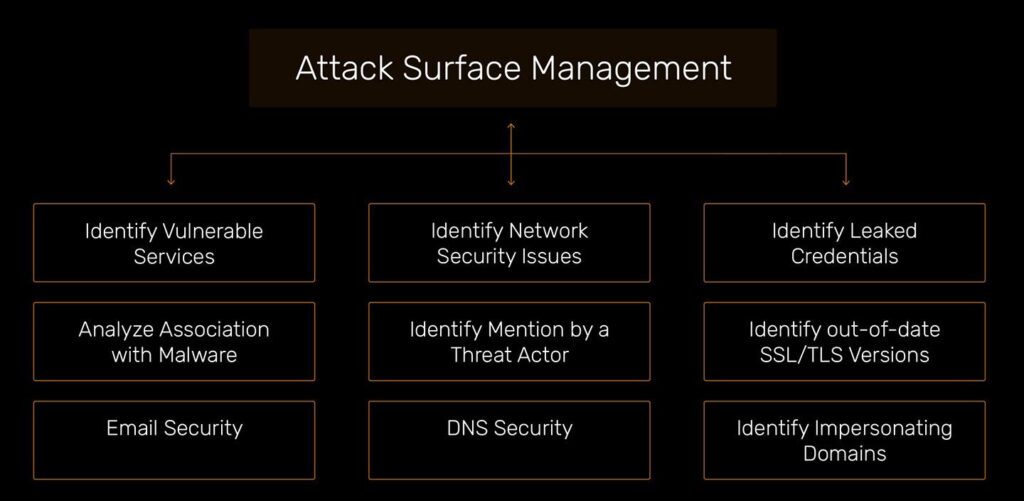Attack Surface Management (ASM) involves continuously scanning and analyzing an organization’s digital footprint, including assets, networks, and applications, to identify vulnerabilities and entry points that could be exploited by cyber threats. ASM tools provide real-time visibility into external-facing assets like websites, APIs, and cloud services, allowing organizations to proactively address weaknesses, prioritize risks, and reduce their attack surface.
Attack Surface Management
The practice of continuously identifying, monitoring, and managing the digital assets, vulnerabilities, and entry points that could be exploited by cyber threats.
Key Benefits
Prioritization of Resources
Allocate resources efficiently by focusing on critical assets and vulnerabilities that pose the greatest threat.
Improved Decision-Making
Proactive Threat Management
Regulatory Compliance
What Does Attack Surface Management as a Service Do?
Security Monitoring
Identifies and maps all external-facing assets, including websites, APIs, and cloud services, to ensure no asset is overlooked.
Vulnerability Scans
Scans for vulnerabilities in systems, applications, and configurations that could be exploited by attackers.
Risk Prioritization
Assesses the severity of identified vulnerabilities and helps prioritize remediation efforts based on potential impact.
Real-Time Monitoring
Provides ongoing monitoring of assets to detect new threats or changes to the attack surface, ensuring proactive defense.
Incident Response
Assists in mitigating and responding to threats by providing detailed insights into exploitable vulnerabilities and attack vectors.

Benefits of Attack Surface Management
Enhanced Visibility
ASM provides a comprehensive view of an organization’s entire attack surface, ensuring all external-facing assets are identified and monitored for vulnerabilities.
Risk Mitigation
By continuously identifying and addressing vulnerabilities, ASM helps prevent potential security breaches before attackers can exploit them.
Improved Compliance
ASM assists organizations in maintaining compliance with security standards and regulations by continuously tracking and securing critical assets and data.
Incident Response
Real-time monitoring and alerts allow for quicker identification of emerging threats, enabling faster response to potential attacks or vulnerabilities.
Cost Efficiency
By preventing breaches and minimizing security risks, ASM reduces the potential costs associated with data breaches, regulatory fines, and reputation damage.
Exposed Assets
ASM helps organizations minimize unnecessary or exposed assets, thereby shrinking the overall attack surface and making it harder for attackers to find entry points.
Organizations experience a 80% reduction in attack surface exposure.
SOURCE: Gartner
Differentiators
Real-Time Risk Monitoring and Alerts
Real-time monitoring of an organization’s digital footprint, sending immediate alerts for any new or evolving vulnerabilities, misconfigurations, or exposed assets that could be exploited by attackers.
Contextual Threat Intelligence and Prioritization
Integrate threat intelligence to assess risks based on actual threat actor tactics, techniques, and procedures (TTPs), allowing organizations to prioritize vulnerabilities that pose the highest risk to their critical assets.
Proactive Exposure Management
Identify and eliminate unnecessary or exposed assets, reducing the overall attack surface and minimizing the potential entry points for cyber threats before they can be exploited.
MA3 Cyber Response Platform
The MA3 Cyber Response Platform enhances collaboration by pre-empting, identifying, and mitigating risks before they become security incidents.
